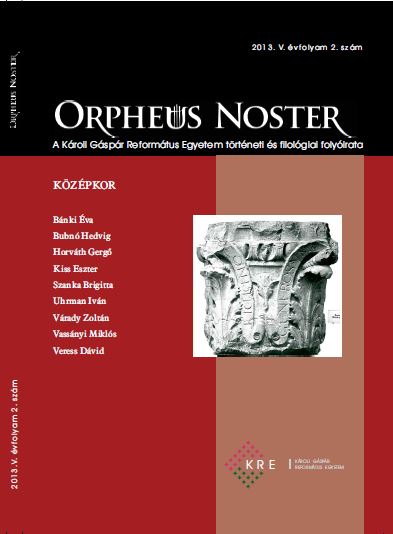Epigráfiai emlékek Mátyás király korából
Epigraphic relics from the age of King Mátyás
Author(s): Zoltán VáradySubject(s): History, Middle Ages, 15th Century, History of Art
Published by: Károli Gáspár Református Egyetem
Keywords: 15th century; the coins of Mátyás; inscriptions; humanistic capitals;
Summary/Abstract: The end of gothic maiuscula style can be put generally to the end of 14th century. In Hungary, similarly to other European territories the gothic minuscula style did not replace the maiuscula on coins. On the coins of Mátyás the features of the maiuscula style is found. The 16 different types of seals used by Mátyás (with the exception of four) contained inscriptions formed from gothic minuscula letters. The relief version of the Gothic minuscula appears in the first decade of the 15th century. The creation of the humanistic (or renaissance) capitals was performed in Italy, both in its early version and in the classical version inspired by the ancient Roman characters. The Italian style humanist capitalis lettering appeared in Hungary very early on the golden seal of Mátyás (1464). The first known apparition of the humanistic capitals can be exactly dated, as the year 1467 is figured on the half-pillar head of Vetési Albert. The so-called early version of the humanistic capitals was found in Hungary too. This early version was most probably transmitted from the German-speaking areas. In Hungary, the first early capitalis type lettering appears in 1472 on the secret Hungarian-Czech ruler’s seal of Mátyás. The epitaph of archbishop Vitéz János is written in these characters in a relief form. The age of King Mátyás is rich in epigraphic relics, and these relics are bearing four different lettering types at the same time.
Journal: Orpheus Noster. A KRE Eszme-, Kultúr-, és Vallástörténeti Folyóirata
- Issue Year: V/2013
- Issue No: 2
- Page Range: 78-103
- Page Count: 26
- Language: Hungarian

